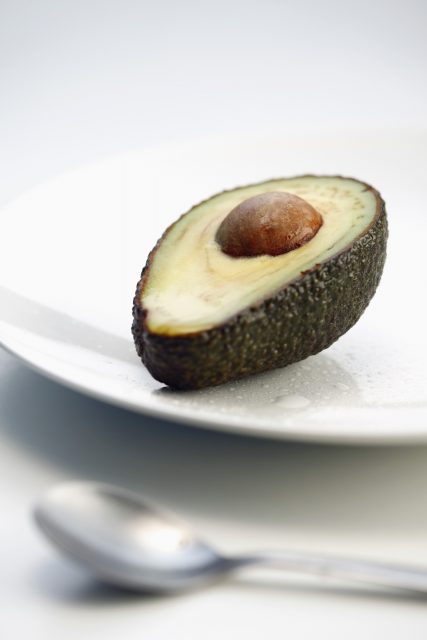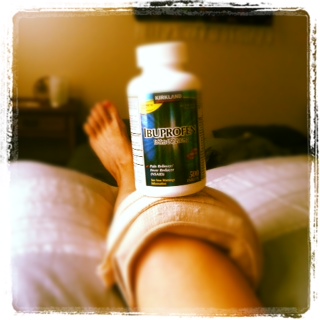Last month on Trail and Ultra Running, I began to discuss how an athlete can become more “metabolically efficient,” or burn more fat and fewer carbohydrate stores at all exercise intensities, as well as at rest. This process takes time, dedication and a little sacrifice, but can result in significant performance benefits as well as short- and long-term health improvements, including weight loss, blood and heart health, and lifespan.
Use the following steps to help you set up your own metabolic efficiency nutrition plan.
Step 1: Set The Right Goals
Your goals should be fat loss, not total weight loss. Focusing only on the scale disregards the type of mass you might be losing. As an athlete wanting to optimize your metabolism (burn more calories) and perform at a higher level, you want to maintain (or even gain) muscle. By tracking only weight and eating too few calories, you can actually put your body into starvation, which locks down fat stores.
I suggest that you find a local Registered Dietitian, fitness facility, or University, where you can have your body composition measured. Using skinfold calipers, underwater weighing or a BodPod are the best and most accessible tools. This allows you to see your fat mass, your lean mass, your body fat percentage, and your Resting Metabolic Rate (RMR). Reschedule a follow-up appointment in 4-8 weeks to assess changes.

Step 2: Learn To Control Your Blood Sugars
Bottom line, metabolic efficiency is about controlling your blood sugar levels through food and exercise. This includes timing of food intake, as well as the types of foods you eat each meal, and how they correlate with your training.
Every time you eat, you should be asking yourself, in this order, “where is my lean protein, where is my healthy fat, and where is my fiber?”
Protein burns more calories during digestion than fat or carbohydrate, which is why most weight loss diets are high protein. Healthy fats are necessary for digestion and absorption of protein, as well as the vitamins and minerals found in high-fiber foods; fats also help prevent blood sugar spikes and crashes.
Fiber, found in vegetables and fruits, helps to keep us satisfied, promote healthy digestion, and most often comes with the benefits of anti-inflammatory and immune-boosting vitamins and minerals. Fiber foods (carbohydrates) also provide a quick energy source, which is balanced out by the slower-burning fat and protein.
I like to use the hand model when discussing daily blood sugar control. Protein and fiber both need to be eaten in a meal or snack to control your blood sugars. For metabolic efficiency, this correlates to a 1:1 ratio of protein to fiber, or the equivalent of one hand of each.
Here is a list of good choices in each category to get you started:
| Lean Proteins | Healthy Fats | Fibers | |
|
Wild fish & seafood
Chicken* Turkey* Plain Greek yogurt, kefir Beans/Legumes/Lentils Eggs* Cottage cheese Nuts, nut butter, seeds Tofu, tempeh, edamame* Grass-fed beef* Naturally low-fat cheese Whole milk* Quinoa |
Olive, avocado, sesame oil
Avocado Nuts, nut butter, seeds Olives Coconut, coconut oil* Eggs (yolks)* Salmon, fatty fish Tofu, tempeh, edamame* Ghee* Cheese |
Non-Starchy Veggies
Broccoli/cauliflower* Brussels Sprouts Leafy greens/lettuce* Onion Asparagus Artichokes Beets* Zucchini Tomatoes* Carrots Cucumber* Radish |
Starchy Vegetables Potato/sweet potato* Winter squash Beans, legumes, lentils Peas Corn* |
| Fruit Berries* Apples* Citrus Bananas Melons Stone fruit* Tropical fruits* |
|||
*Should be organic
By aiming for protein, fat, and fiber each time you eat, and using the 1:1 ratio, all that is left is figuring out how much of each to eat.
Using your hand is a great place to start (this link can help). The primary reason I don’t prescribe calories or serving sizes is because our body’s needs differ day to day, and getting locked into a “serving” steers us away from listening to our body’s needs. By simply focusing on the above three components, your satisfaction is improved throughout the day.
Use the 3-4 hour window as a gauge to your portions, knowing that a meal should keep you satisfied for three hours, but you should be hungry after four hours. If you find you are consistently hungry within 1-2 hours of eating a meal, then increase the protein by 50-75%.

Step 3: Building Your Plate
For the calorie-tracking and number-crunching folks:
Option A (if you know your lean body mass)
- Protein: you want to consume no less than 1g protein/pound of lean body mass to maintain lean muscle tissue in a caloric deficit. Protein should make up ~30% of your total calories.
- Total Calories: (protein (g) x 4cal/g) x 0.30
- Fat (g): Total calories x 0.25-30 (Fat should make up ~25-30% of your total calories)
- Carbohydrates (g): Total calories x 0.40-0.45 (Carbohydrates should make up ~40-45% total calories).
Option B (if you don’t know your lean body mass)
- Protein (g): body weight (kg) x 2.0-2.5.
- Carbohydrates (g): body weight (kg) x 3-4
- Fat (g): body weight (kg) x 0.8-1.0
- Total Calories: (Protein (g) x 4) + (carbohydrate (g) x 4) + (fat (g) x 9)
Use this RMR calculator as a reference. A good place to start is to eat 200-500 calories above your measured metabolic rate, depending on how aggressive you want to be.
For the visually-inclined, “don’t make me count calories” folks:
There is no research that supports calorie counting as the only successful tool for fat loss. There are actually very few athletes I counsel that employ the calorie-counting method. I encourage most of my clients to use a more qualitative approach, by using tools taught by Bob Seebohar, a guru in sports nutrition and metabolic efficiency.
This approach involves understanding food from a “satiety standpoint,” or how different foods and food combinations can give you biggest energy “bang” for the smallest calorie “buck.”
The image on the right shows an example of what Bob Seebohar calls the “metabolic efficiency periodization plate.” As you can see, it does include carbohydrates, but it does not include grains, starches, or added sugars. Your carbohydrate intake comes solely from high-fiber vegetables and fruits, as well as higher-carbohydrate protein sources such as legumes and, in moderation, unsweetened dairy (plain Greek yogurt or kefir, cottage cheese, goat dairy).
Step 4: Timing
Daily Nutrition
The final step involves the proper timing of eating, sleeping, and exercise. Start with a base of eating breakfast within 90 minutes of waking up (unless exercise is involved), and eating every 3-4 hours from that point onward. You should also stop eating 2-3 hours before bedtime.
I don’t recommend fasting, but by manipulating the timing of your eating during the day, you can seamlessly insert fasting into every 24-hour cycle. Research proves that fasting, when done correctly, supports fat burning, increased lifespan, and decreased free radicals. Aim to fast at least 12 hours between your last calories in the evening, and your first calories in the morning. This includes beverages.
If possible, try to keep all food intake within an 8-10 hour time span.
Nutrition & Exercise
If you generally wake up and exercise first thing in the morning, there is no need to eat beforehand, but you should aim to drink 8-24 ounces of water or electrolytes before you leave. Regardless of how long your training will be, you can always start fasted.
If your training occurs midday, it is best to complete your calorie intake three hours prior. This allows for proper digestion and blood sugar response. Eating any closer to exercising may result in carbohydrate use (instead of fat). If you are ravished and need something, a simple carbohydrate mouth rinse can trick the muscle into thinking they have been fed. A small spoonful or avocado, coconut oil, or nut butter are appropriate food choices.
Recovery is never a time to skimp on calories or nutrition, regardless of where you are in your training cycle. You should aim to consume 25-50g of high-glycemic-index carbohydrate with 20-30g lean protein within 15 minutes of finishing a workout. Keep fat low, which can slow absorption and recovery.

A Key Component: Listen to Your Body
Remember that all of the above equations and calculations are just that; 2-dimensional math. They give us a good picture of where to start for energy intake, but the most important calculation to know is that of your body. During the first couple of weeks of transitioning your training and nutrition plan, you need to be very in tune with your body. The best way to do this? Look for these red flags as a sign that you are under-fueling:
- Injury
- Poor recovery or soreness beyond what would be expected
- Sickness
- Poor sleep
- Irregular bowel habits
But how do you know if you burning fat and becoming more metabolically efficient? (without the scale)
- Track your workouts. At the beginning of the 8-week phase, perform some baseline fitness tests (timed mile, a distance that you can hold a specific tempo, stair- or hill-climbing, strength such as bench press, deadlift; 2k rowing time; power output on a bike; heart rate). Test these every 4 weeks.
- Buy a tape measure – measure places such as waist (women: narrowest point, men: 1” below the belly button), hips (women only – widest point), thighs (3” above the knee cap), calves (widest point), neck (just below the Adam’s apple), chest (across the nipples).
- Pay attention to how your clothes are fitting
- Be aware of your energy levels, both during workouts and in your daily routine
Maintenance and Beyond
Once you have completed the metabolic efficiency phase, you will slowly reintroduce unprocessed, low-gluten grains, such as quinoa, wild or brown rice, potatoes, corn, oats, etc. Your body can now efficiently run on fewer carbohydrates day-to-day, as well as during exercise. I recommend that metabolically-efficient individuals consume anywhere from 100-200g carbohydrate daily. Again, these should come from vegetables, fruits, beans, healthy starches, and high-fiber whole grains.
You can also adopt the 90/10 approach, allowing controlled and planned “misses” such as dark chocolate, red wine, ice cream, chips, etc., to happen about 10% of the time. I don’t encourage “cheat” days because it encourages overindulgence and an unhealthy relationship with food. “Misses” are a necessary part of balanced and sustainable nutrition, in a limited and controlled amount.
Changing your mindset and habits will not happen overnight (research shows it takes six weeks to establish a habit). But with patience, self-forgiveness, and diligence, you can change how you view food, how you view your body, and how your body functions for you. I cannot promise you a PR, but I can promise a new intuition with your body’s biological needs and more consistent energy levels. And hopefully a PR gets thrown in the basket as well. ☺

















I will try all o fthis and let you know how it works for me in 6 weeks.
Please do
Thanks for including the section on “healthy fats.” I think there are still many misconceptions out there about what fats are healthy and needed for optimal performance and for healthy living day to day.